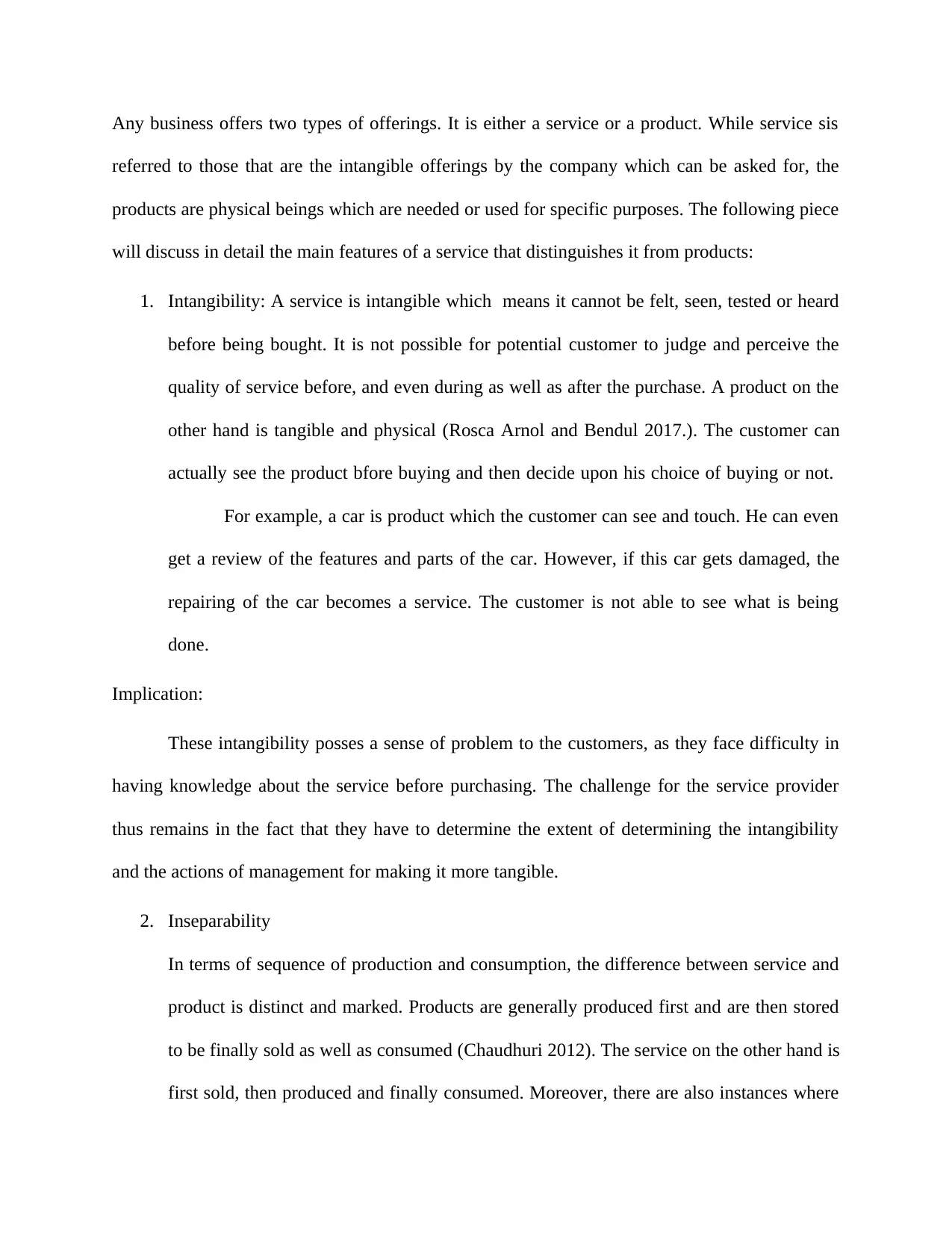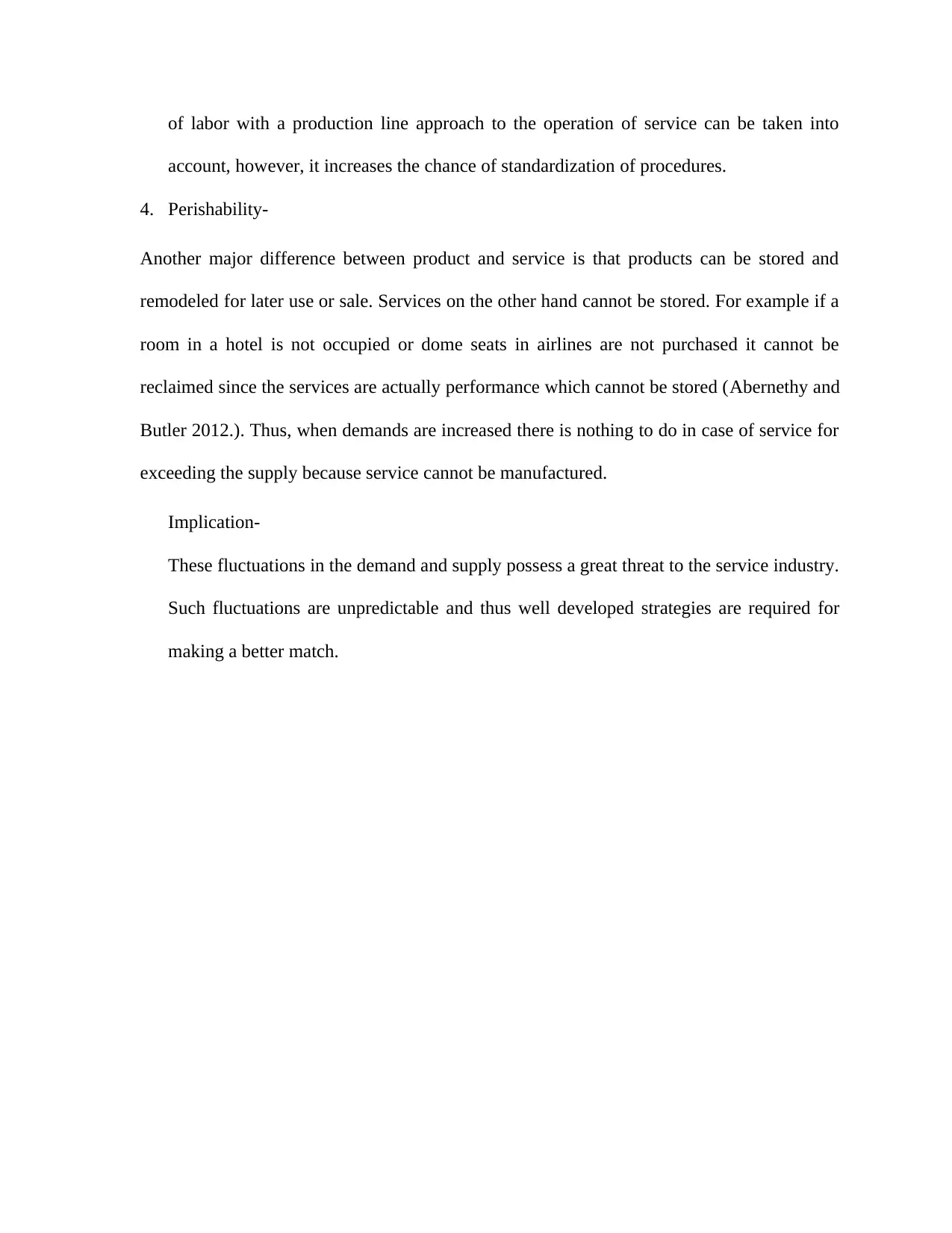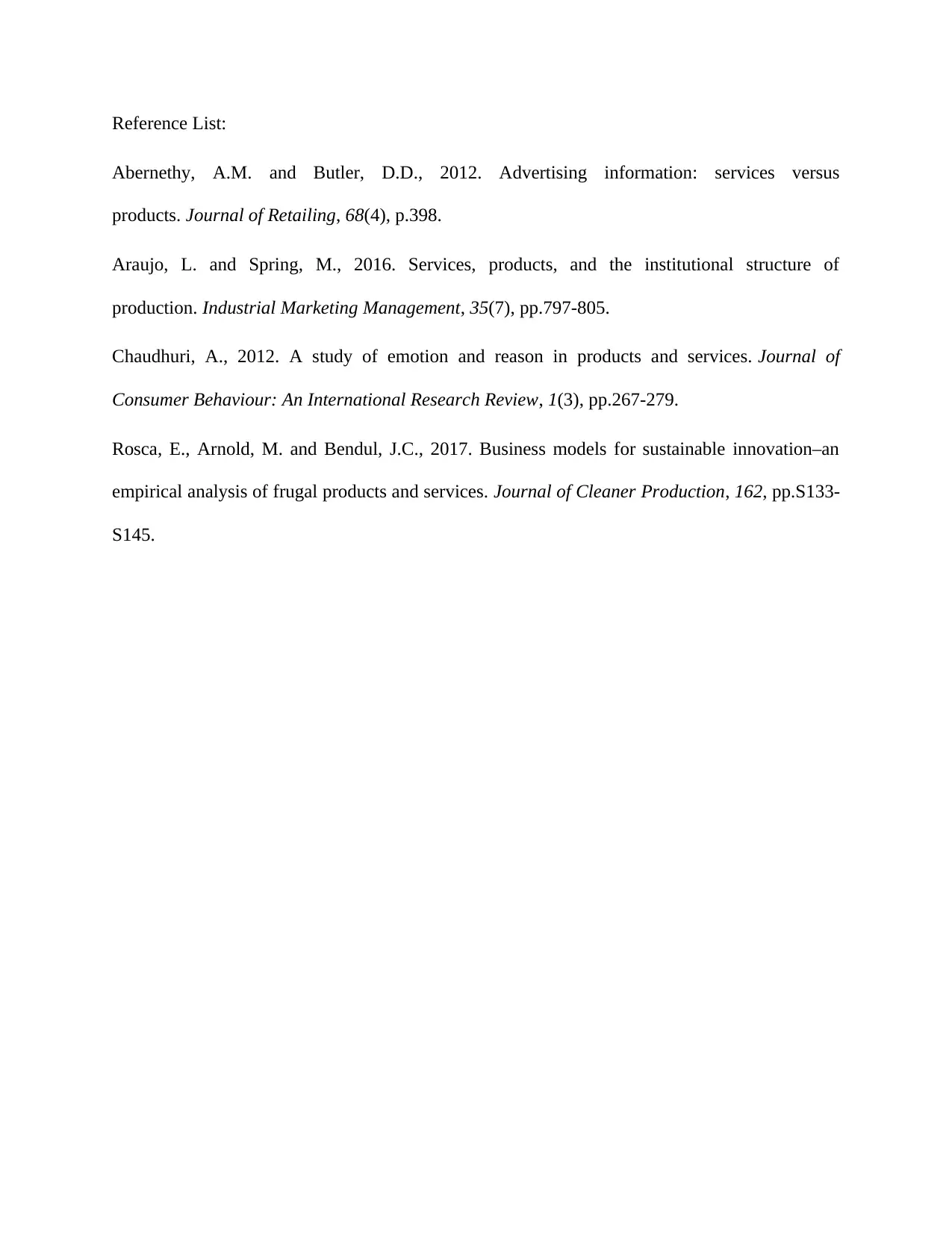Product and Service: Understanding the Key Differentiating Factors
VerifiedAdded on 2022/09/22
|5
|971
|44
Report
AI Summary
This report provides a detailed comparison between products and services, highlighting their key differentiating factors. The author begins by defining the two types of offerings, emphasizing that products are tangible while services are intangible. The report then explores the core differences through several characteristics: intangibility, inseparability, variability, and perishability. Intangibility is discussed in terms of the inability to assess a service before purchase, leading to management challenges in making services more tangible. Inseparability focuses on the simultaneous production and consumption of services, requiring careful attention to customer interaction and employee training. Variability discusses how service quality can fluctuate based on the provider and environment, and the report suggests strategies to mitigate this. Finally, perishability explains how services cannot be stored, creating challenges in managing supply and demand fluctuations. The report concludes by emphasizing the implications of these differences for businesses and the need for well-developed strategies to address them.
1 out of 5












![[object Object]](/_next/static/media/star-bottom.7253800d.svg)